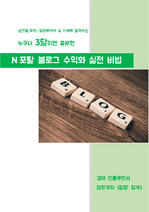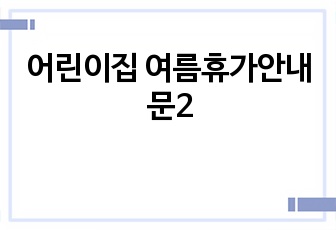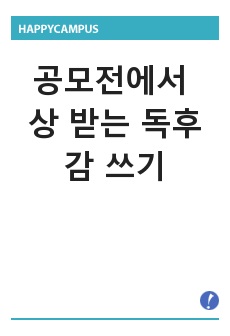* 본 문서는 배포용으로 복사 및 편집이 불가합니다.
서지정보
ㆍ발행기관 : 동양미술사학회
ㆍ수록지정보 : 東洋美術史學 / 12권
ㆍ저자명 : 쑨화
목차
[국문초록]
Ⅰ. 들어가며
Ⅱ. 삼성퇴유적의 기능적 분포
Ⅲ. 삼성퇴유적과 고대 촉(蜀)의 역사
Ⅳ. 삼성퇴유적의 보호와 전시
▋참고문헌
한국어 초록
삼성퇴 문화는 중국 남서쪽 사천 분지에 분포하고 있으며 연대 범위는 대략 기원전 1600~1200년 사이 청동기문화에 속한다. 이 문화는 쓰촨(四川)성 광한(廣漢)시 난싱(南興)진 三星堆유적을 대표 유적으로 하고 있으며, 유적의 범위가 넓다. 왜냐하면 이 유적의 가 장 주요한 발굴작업과 가장 중요한 고고발견 모두 “三星堆”라는 언덕 주위에 집중되어 있기 때문에“삼성퇴유적”으로 명명되었다. 삼성퇴유적은 청두成都 평야에서 가장 오래 지속 된 선진先秦 취락과 성읍으로, 장강 상류지역에서도 이미 알려진 최대 규모의 청동기시대 유적이다. 삼성퇴유적으로 대표되는 삼성퇴문화는 쓰촨 분지 최초의 청동기문화로서, 중국 청동기시대 고고 중에서 중요한 지위와 작용을 하고 있다. 삼성퇴유적과 삼성퇴문화는 전설적인 고촉국古蜀国의 초기 역사를 탐구하고 연구하는데 풍부한 실물자료를 제공한다. 유적은 1929년에 발견되었다. 1934년, 화서대학華西大學박물관이 삼성퇴유적의 북쪽에 있는 月亮湾을 조사하고 발굴하였다. 1980년부터 1986년까지 쓰촨성 고고학자들은 연속적으로 삼성퇴유적에서 여러 차례의 고고학적 발굴을 실시했으며, 기본적으로 이 유적의 종적 변천 과정을 파악하였으며 동시에 삼성퇴문화의 명명을 제시하기도 하였다. 1986년에는 삼성퇴유적의 남쪽에 '삼성퇴'라는 언덕 서남쪽에서 두 개의 기물 구덩이가 차례로 발견 되어 대량의 금, 구리, 옥, 석, 뼈, 상아牙, 도질의 기물들이 출토되었으며, 이 때부터 삼성 퇴유적이 학술계의 광범위한 주의를 끌게 되었다. 1987년부터 1996년까지 고고학자들은 삼성퇴유적 동 서, 남 삼면의 외성벽을 확인하였고, 유적 서북부의 종횡의 두 개의 내성벽 유적을 모두 해부하여 하상시기夏商時期의 삼성퇴유적이 넓고 큰 토성담에 둘러싸여 있었으며, 서북쪽에도 내부에 작은 성(月亮湾小城)을 가지고 있는 규모가 매우 큰 성읍城邑이었다는 것을 인식하게 되었다. 2018년 이후에는 쓰촨성 문물고고연구소 四川省文物考古研究所가 삼성퇴유적의 주요 지점 몇 곳을 체계적으로 발굴하였고, 삼성퇴의 기존 두 기물갱器物坑 사이에서 이전에 발 견되지 않았던 기물갱을 발견하였다. 고고의 재료가 많아지면서 연구자의 관심은 삼성퇴 두 기물갱에서 삼성퇴성터로, 삼성퇴성터에서 삼성퇴문화와 관련 고고유적지로 확대되었으며, 그에 따라 삼성퇴유적, 고촉역사와 문명, 삼성퇴유적의 보호에 관한 연구로 심화되었다. 삼성퇴유적은 1988년 중국의 '전국중점문화재보호단위全國重點文物保護單位'로 지정되 었으며, 전국중점문물보호관리요구에 따라 유적의 보호범위와 건설통제지대를 설정하였으며, 보호표지와 경계표지를 세우고, 삼성퇴유적의 전시와 보호를 하나로 묶은 관리기구 - 삼성퇴유적박물관三星堆遺址博物館을 건립하였으며, 아울러 삼성퇴유적의 기록물건설작업도 완성하였다. 삼성퇴유적의 중요'고촉국유적古蜀國遺蹟'이라는 이름으로 '중국 세계문화 유산 예비목록'을 등재 신청하였다. 삼성퇴유적과 이미 세계문화유산으로 등재된 중국 허난성 안양시 은허유적殷墟遺蹟은 모두 20세기 20~30년대 이미 고고작업을 시작한 청동기시대 고대국가의 도성유적이다. 삼성퇴유적의 많은 아름다운 유물들이 세계 고고학계와 문화유산 보호학계를 놀라게 하였으며, 몇몇 대표적인 유물들이 오랫동안 세계 곳곳을 돌며 전시되어 온 것은 삼성퇴유적의 세계적인 영향을 단적으로 반영한 것이다. 이에 따라 삼성퇴유적이 위치하고 있는 정부와 현지 사회공동체, 고촉국이 소재하고 있는 쓰촨 지방정부와 대중은 국내외 고고학과 문화 유산학 전문가들로서 삼성퇴유적의 <<세계유산목록>> 등재신청에 큰 기대를 걸고 있다.현재 쓰촨성이 직접 관할하는 고고, 보호(保護)와 전시를 하나로 묶은 삼성퇴문명연구원(三星 堆文明研究院)이 이미 조성을 시작했으며, 삼성퇴유적의 대규모 발굴작업이 현재 진행 중으로, 유적 중 중요 유적이 소재하고 있는 구역은 토지 국유화 징수작업도 빠르게 진행되고 있고, 삼성퇴유적박물관도 증축과 전면적인 전시를 진행 중에 있으며, 유적박물관과 유적공원의 연결과 최적화 설계도 신속하게 추진되고 있다. 삼성퇴유적이 빠른 시일안에 더 좋은 모습으로 세계 각지에서 오는 관람객들을 맞이할 것이라고 믿는다.
영어 초록
Sangxingdui culture is spread in the Southwest China Sichuan Basin, and the range of the period belongs to the culture of the Bronze Age between 1600 and 1200 B.C. This culture has Sangxingdui Ruins, Nanxing, Guanghan, Sichuan as the representative ruins, and the range of the ruins is wide. They were named “Sangxingdui Ruins” since the most important excavation and the most important archaeological discovery of the ruins are concentrated on the hill called “Sangxingdui.” Sangxingdui Ruins are the community and castle town during the pre-Qin period that lasted the longest in the Chengdu Plain and are the largest ruins during the Bronze Age already know in the upper Yangtze River region. Sangxingdui culture represented by Sangxingdui Ruins is the culture of the Bronze Age first in the Sichuan Basin, which takes an important position and has an important function of the antiquities of China during the Bronze Age. Sangxingdui Ruins and Sangxingdui culture provide abundant real data to explore and investigate the early history of the legendary Ancient Kingdom of Shu. The ruins were discovered in 1929. In 1934, Huaxi University Museum investigated and excavated Wueliang north of Sangxingdui Ruins. From 1980 through 1986, Sichuan archaeologists continuously conducted archaeological excavation several times in Sangxingdui Ruins, basically, understood the ruins’ vertical transformation process and at the same time, proposed the name of Sangxingdui culture, too. In 1986, two pits of articles at the southwestern hill called “Sangxingdui” in the south of Sangxingdui Ruins one by one, and massive gold, copper, jade, stone, bone, ivory, and unglazed articles were excavated. Since then, Sangxingdui Ruins attracted wide attention in the scientific field. From 1987 through 1996, archaeologists found Eastern, Western, and Southern outer walls on the three sides of Sangxingdui Ruins and analyzed two inner wall ruins crisscross the northwestern ruins to recognize that Sangxingdui Ruins during the Xia and Shang periods were surrounded by wide large fortress walls and that the northwest area, there was a large-scaled castle town having small castles inside. Since 2018, Archaeological Research Institute for Sichuan Culture systematically excavated a few major sites of Sangxingdui Ruins, and a pit of articles that had not been discovered previously was discovered between the two existing pits of articles of Sangxingdui. As archaeological materials increased, researchers’ interest expanded from the two pits of articles in Sangxingdui to Sangxingdui castle ruins, from the Sangxingdui castle ruins to the archaeological sites related to Sangxingdui culture, and accordingly, the research was deepened into studies of Sangxingdui Ruins, ancient Shu culture and civilization, and the protection of Sangxingdui Ruins. Sangxingdui Ruins were designated as one of China’s “Major Historical and Cultural Sites protected at the National Level” in 1988 and according to the nationwide priority demand for protection and management of culture, the protection scope and construction control zone for the ruins were set, protection signs and boundary markers were established, the Management Agency binding the exhibition and protection of Sangxingdui Ruins together - Sangxingdui Heritage Museum was constructed and the documentary construction work for Sangxingdui Ruins was completed. The ruins applied for its registration in “the preliminary list of China’s World Heritage Site” in the name of important “Ancient Kingdom of Shu Ruins” of Sangxingdui Ruins. Sangxingdui Ruins and Henan Yinxu Ruins already listed as a world heritage site are both capital city ruins of the ancient country of the Bronze Age, which already began archaeological work in the 1920s~1930s. Many beautiful relics of Sangxingdui Ruins amazed world archaeological communities and cultural heritage protection research fields, and some representative relics have been exhibited, circling around the world for a long time, which directly reflects the global influence of Sangxingdui Ruins. Accordingly, the government and community, where Sangxingdui Ruins of the Ancient Kingdom of Shu are located and the local government and the public of Sichuan where domestic and foreign experts of archaeological and cultural heritage studies have great expectations on the application of Sangxingdui Ruins for “World Heritage Site List.” The construction of Sangxingdui Civilization Research Institute, which bound the protection and exhibition of antiquities together currently controlled by Sichuan directly already began, and the large-scale excavation work for Sangxingdui Ruins is in progress, and the district in which important ruins are located, the collection work for land nationalization is in progress fast. Sangxingdui Heritage Museum, too, is in the progress of expansion and full-scale exhibition, and the connection and the optimization design of the Heritage Museum and ruins park are promoted fast. It is convincing that Sangxingdui Ruins will welcome visitors from all over the world better shortly.
참고 자료
없음
"東洋美術史學"의 다른 논문
더보기 (3/8)




